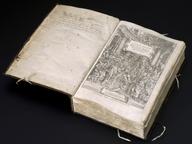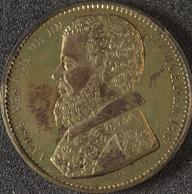

Andreas Vesalius 1514 - 1564
- occupation:
- Anatomist,
- Physician
- Nationality:
- Belgian
- born in:
- Brussels, Brussels, Belgium
The anatomist Andreas Vesalius investigated the human body by means of dissection and changed doctors' attitudes towards the role of observation in medicine. Born in Brussels, Vesalius studied medicine at two of the most renowned universities of the time, Paris and Padua. As a student, he was interested in comparing Greek texts with their Arabic translations, and he wrote a thesis on the work of the surgeon Rhazes.
Immediately after gaining his doctorate in 1537, Vesalius was made Professor of Surgery and Anatomy at the University of Padua. In his most important work, On the Fabric of the Human Body of 1543, Vesalius showed that Galen was wrong on some points of human anatomy, and urged doctors to conduct systematic dissections of human corpses themselves. His work was very influential for early modern medicine both because it gave doctors more detailed knowledge of human anatomy and because it encouraged them to investigate critically the claims of ancient medical authorities. He also worked closely with artists, to ensure that illustrations were both accurate and attractive. The conventions he established for the representation of the human body were influential for many centuries to come.
Like many in his family before him, Vesalius became physician to the imperial family, serving Emperor Charles V and his son, Philip II of Spain. Vesalius died while returning from a pilgrimage to the Holy Land (Palestine) in 1564.









